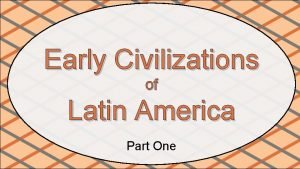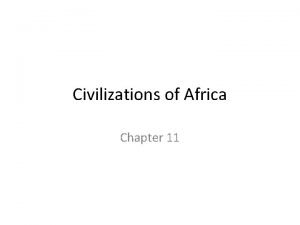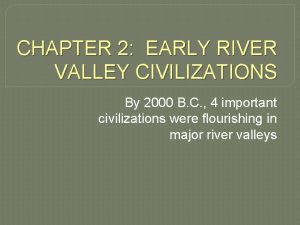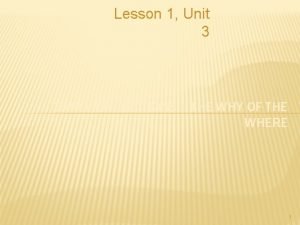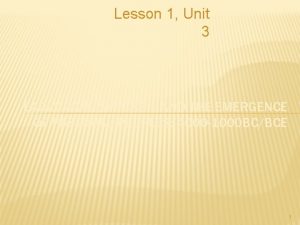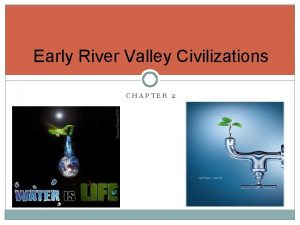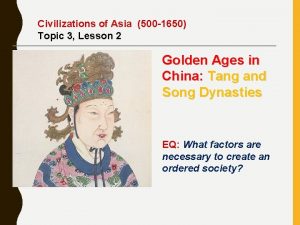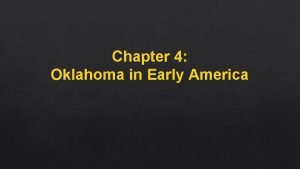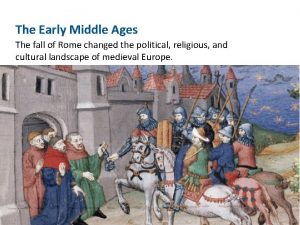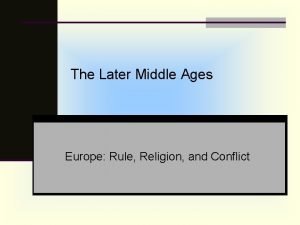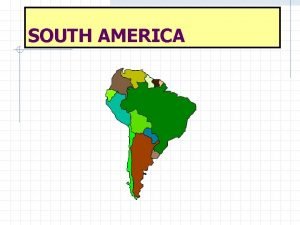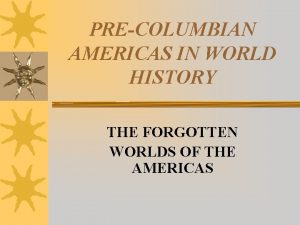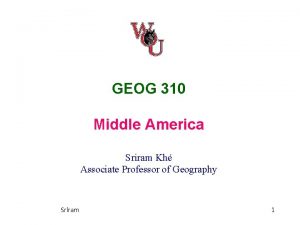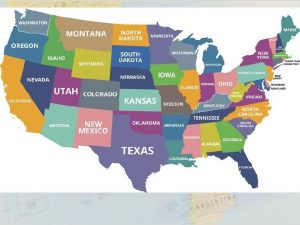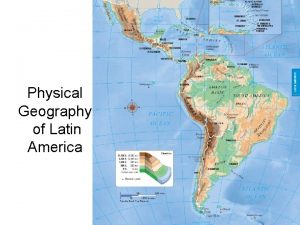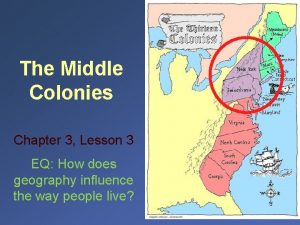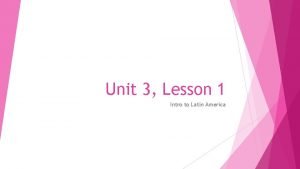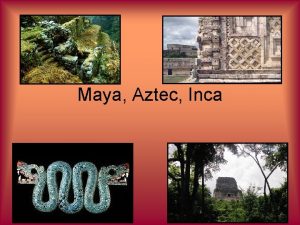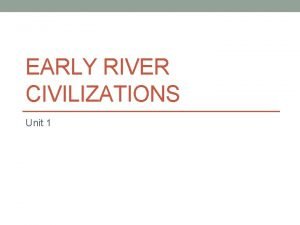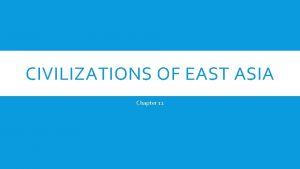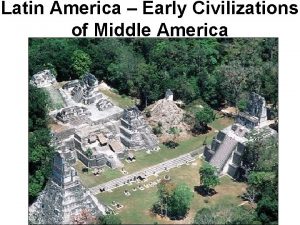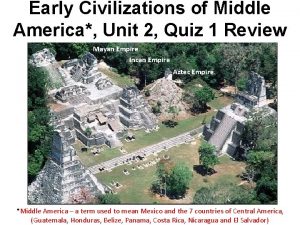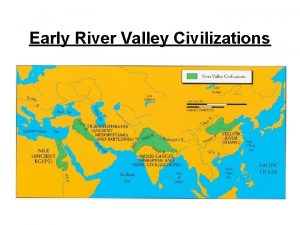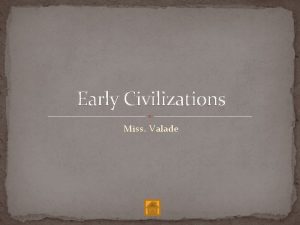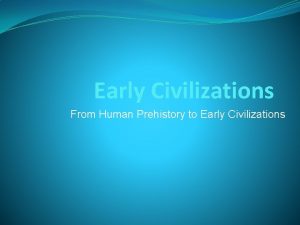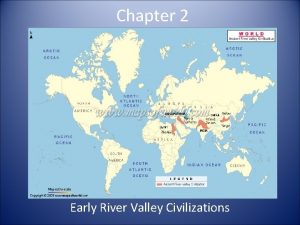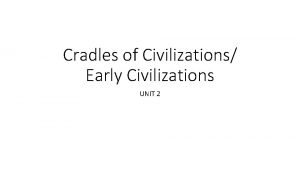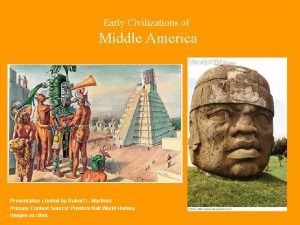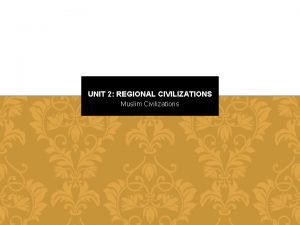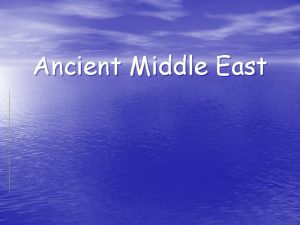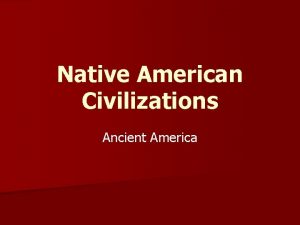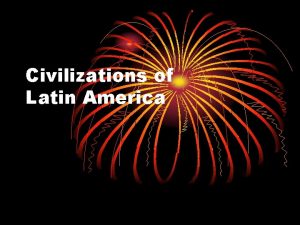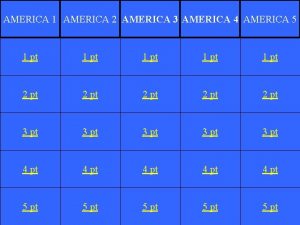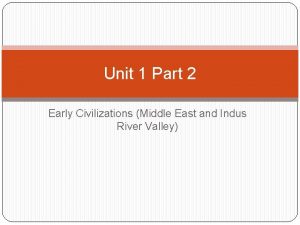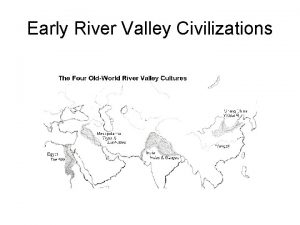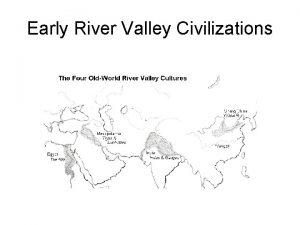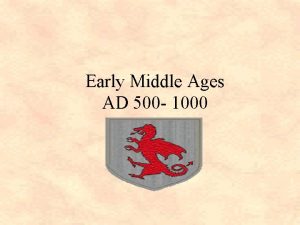Early Civilizations of Middle America Unit 2 Review

































- Slides: 33

Early Civilizations of Middle America*, Unit 2 Review Mayan Empire Incan Empire Aztec Empire *Middle America – a term used to mean Mexico and the 7 countries of Central America, (Guatemala, Honduras, Belize, Panama, Costa Rica, Nicaragua and El Salvador)

The Incas: People of the Sun! During the reign of Topa Inca, the Incan Empire grew to over 2, 500 miles with 12 million people under his rule, making it the largest of the 3 empires we have studies. During the reign of Topa Inca, the Incan Empire traveled south, from Ecuador to Argentina, along the coast of the Pacific Ocean.

Aqueduct A combination of bridges and tunnels, using stone pipes which would bring water from rivers to people a few hundred miles away. The Inca built great aqueducts (bridges and tunnels to transport water) in order to bring water into their villages from the mountaintops.

A Census is an official count of all people living in an area. Quipas was a knotted string used by the Incas as a method of keeping records _____ 3, 643

Census Official count or total number of people in an area. Taxes were paid in food. The leader and nobles were given theirs, and then it was dispersed to the poor, sick and elderly. The Inca kept excellent census records (population count and collecting taxes) with their quipus.

The Inca were master of stone. They did not have metal tools yet cut and interlocked stone so tight a piece of paper could not fit through any two stones. And they were heavy. They did not have wheels or horses. Lastly, their buildings were earthquake proof!

Along the 2, 500 miles of South American coast, most of it through the Andes Mountains, the Incans made over 14, 000 miles of roads and bridges – an incredible feat! -the roads allowed for quick travel of the Incan army -the roads allowed a series of runners who were messengers to travel 250 miles a day with news of the empire -the roads allowed for safe travel of trade caravans -the roads allowed for taking census and collecting taxes for the government

Civil War A war fought between two groups within the same nation/civilization The Inca were fighting a civil war (a war within a nation) in the 1520 s, which allowed the Spanish to easily defeat them.

INCAN EMPIRE’S ACCOMPLISHMENTS IN REVIEW -They had the largest empire along the Andes coast of South America -They built over 14, 000 miles of roads and bridges -They built earthquake proof buildings without using metal tools or cement/concrete -They built aqueducts which brought water hundreds of miles to dry land -They kept careful, organized records by taking an annual census and thus taxing appropriately -Their government helped the elderly, sick and poor from the collected taxes. It organized which villagers would work on roads, buildings, and bridges -They used quipus to keep records mathematically -They used runners who kept the empire informed daily running over 250 miles, from town to town However, they did not have a written language or money as we know either.

Introduction to the Aztec Empire Main Idea: The Aztec built their empire in Mexico during the 1400 s, with their capital in Tenochtitlan. Its importance is the Aztec transformed a lake into their capital city and ruled a huge empire.

Conqueror, defeater A wave of Spanish conquistadors (conquerors) in the early 1500 s disrupted and destroyed many nations native to the Americas.

The Aztec Civilization began in the Valley of Mexico. They settled on an island in Lake Texcoco, in 1325. It took time to develop, but lasted through the early 1500 s.

The Aztec people were able to change a swampy lake into a great city, which was called Tenochtitlan which was its capitol city.

The floating island Tenochtitlan and the Aztecs are remembered for great farming. The illustration above shows an Aztec farmer sowing the seeds. The illustration below shows an Aztec farmer reaping what he sows. Anchored to a lake, Tenochtitlan had an endless supply of water.

Farming Main Idea: Most Aztec were farmers, and they built floating gardens (chinampas). ß Then And Now Its importance is even if there’s no rain, the crops still have water. There will have water to drink and food to eat.

Alliances Agreement in which people cooperate for a common reason Some nations or people form alliances in which they have an agreement or truce to look out for and protect each other. In the case of the Aztec neighboring tribes, they formed alliances with the Spanish to defeat the Aztec nation. The Aztec were not kind to their neighbors forcing many into slavery or human sacrifice.

Moctezuma was the leader of the Aztec Empire when the Spanish arrived in the New World. He demanded much from his people. He also made enemies with tribes near the Aztec Empire, meaning very little peace with neighboring tribes. . .

When Cortes arrived in Mexico, he found many of the Aztecs were willing to assist him overtake Moctezuma. The Spanish and Aztec enemies formed alliances.

By 1521, the Aztec people were defeated by Cortes

Exploit To take advantage of someone Hernan Cortez exploited (took advantage of) the natives that helped his own needs of waging war against the Aztec. Afterwards, he enslaved them.

Aztec doctors were able to make over a thousand types of medicine from using plants. However, they could not develop…

Immunity Resistance to diseases It’s too bad the Native Americans did not have immunity (defenses) to European diseases; it would have made for a much fairer fight.

It only took 15 years for the Spanish to defeat 2 powerful empires in America (Aztec and Incan Empires). The Spanish brought disease to America, which the Native Americans had never experienced, nor the immunity to protect them.

Empire Different groups of people ruled by one leader or government Much like ancient Rome, the Aztec built an empire (expanding nation) in which they conquered other Natives Americans and took their land resources.

The Aztecs are remembered for developing hieroglyphics, accurate calendars, medicine, designing jewelry, fine crafts and predicting eclipses.

AZTEC EMPIRE’S ACCOMPLISHMENTS IN REVIEW -They built a magnificent city on a lake -They were master farmers creating chinampas, floating gardens -They used artificial irrigation for their farming -They used a written language, hieroglyphics -They used a daily calendar based on the Mayan calendar -Their scientists were able to predict eclipses and movement of the planets -Their city of Tenochtitlan was like NYC of today with its culture, zoos, museums, temples, wide streets and busy markets selling food jewelry made of silver and gold -Their fierce army protected merchants as they traveled through the empire creating an economy -Their doctors made over 1, 000 medicines from plants and herbs However, they were brutal, often enslaving their enemies or using them for human sacrifice

The Aztec and Mayan form of writing was known as hieroglyphics. This is a form of graphic writing, using signs and symbols instead of letters, as we do.

The Mayan Civilization lasted from A. D. 250 – 900.

The Mayan Empire was the earliest of the three empires and was located in Central America and Mexico. The Mayan Empire lasted the longest of the three empires.

The Mayans are remembered for being astronomers and developing an accurate calendar. They had an alphabet. They, built pyramids and temples. They introduced the value of zero, in math. EMPIRE’S

MAYAN EMPIRE’S ACCOMPLISHMENTS IN REVIEW -Their empire was first and lasted the longest, more than twice as long as the other two empires we studied -They built great cities which were religious, economic and cultural centers of the day -They were great scientists studying the planets and stars, creating two calendars, one was a daily calendar and one for their celebrations/holidays -They were great mathematicians, being one of the first to include the value and having a symbol for zero -They built great pyramids and temples -They had their own written language, hieroglyphics

The Fall of the Mayan Empire One theory about the fall of the Mayans has them relying heavily on their king. As time went on, things started to go wrong. There was crop failure from drought and soil erosion. The people turned to their king to save the day. The king would respond with more human sacrifice. These sacrifices did nothing but deplete the population and cause frustration among the people. In turn, the people lost faith in the king. Eventually, the people abandoned, left the cities to live on their own.

Thank you To review the histories of For taking time The Aztec, Incan and Mayan Empires
 Early south american civilizations
Early south american civilizations Ancient india lesson 1 early civilizations
Ancient india lesson 1 early civilizations Chapter 11 section 1 early civilizations of africa
Chapter 11 section 1 early civilizations of africa Machu picchu and mesa verde similarities
Machu picchu and mesa verde similarities River valley civilizations def
River valley civilizations def Lesson 1 early civilizations
Lesson 1 early civilizations Unit 3 lesson 1 sumer and mesopotamia
Unit 3 lesson 1 sumer and mesopotamia Chapter 2 early river valley civilizations
Chapter 2 early river valley civilizations Unit 10, unit 10 review tests, unit 10 general test
Unit 10, unit 10 review tests, unit 10 general test Topic 3 review questions civilizations of asia answers
Topic 3 review questions civilizations of asia answers Early cpr and early defibrillation can: *
Early cpr and early defibrillation can: * Chapter 4 oklahoma in early america
Chapter 4 oklahoma in early america We can do a rap of the map of the us
We can do a rap of the map of the us Asia africa europe north america south america
Asia africa europe north america south america Whats an onomatopeia
Whats an onomatopeia Why called latin america
Why called latin america Happening body art
Happening body art Unit test review algebra 2
Unit test review algebra 2 Early middle ages
Early middle ages Middle childhood and adolescence
Middle childhood and adolescence Early middle ages
Early middle ages South america map regions
South america map regions Rimland middle america
Rimland middle america Rimland middle america
Rimland middle america Latin america map physical features
Latin america map physical features Physical geography of latin america worksheet answers
Physical geography of latin america worksheet answers Lesson 3 the middle colonies answer key
Lesson 3 the middle colonies answer key Lesson 1 latin america africa and the middle east
Lesson 1 latin america africa and the middle east Social impact statement for early design review
Social impact statement for early design review Social impact statement for early design review
Social impact statement for early design review Inca maya azteca mapa
Inca maya azteca mapa Map of river valley civilizations
Map of river valley civilizations 4 river valley civilizations
4 river valley civilizations Chapter 11 civilizations of east asia
Chapter 11 civilizations of east asia
